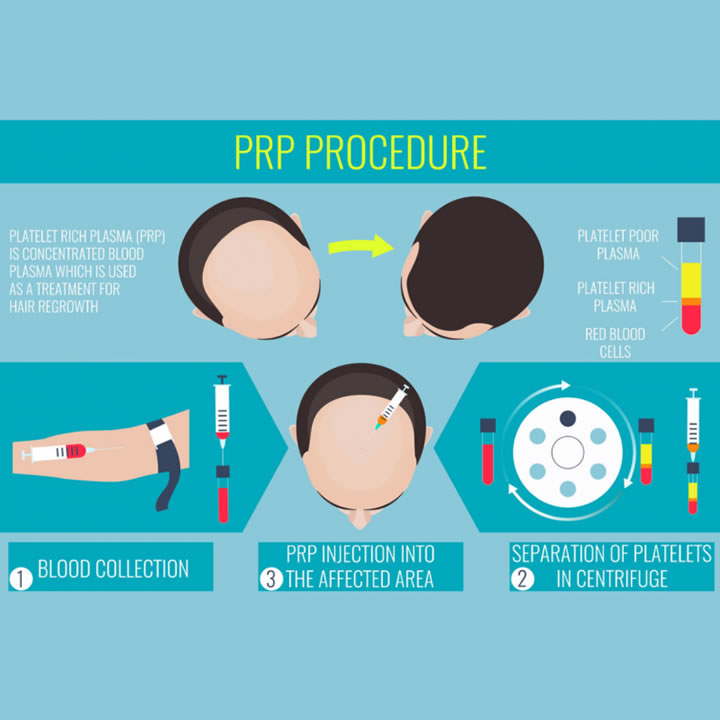Platelet-rich plasma (PRP) is extracted from the blood and used to treat musculoskeletal diseases for a long time. In recent years, PRP has been used to treat skin conditions commonly known as “vampire treatment.” It is presumed to work by injecting PRP into the skin and sometimes after micro-needling, a common technique whereby small needles are used to develop tiny wounds, which professionals say. It is a way of improving skin appearance and texture.
Recently, PRP treatment has proved to be a promising treatment for hair loss, a huge problem both men and women suffer from. Hair is a critical part of us that is highly connected to appearance, affecting an individual’s self-esteem and confidence. At last, you can opt for PRP treatment to help your condition. For more info about vampire hair treatment, you can see more on the MyBotoxLA website.
The Science Behind PRP
When it comes to hair loss, medical scientists view plasma as support for dominant hair loss that also promotes hair follicles in the scalp that lack the nutrition for their development. The plasma separated from the bloodstream during the process has been discovered to hold growth factors derived from a mixture of cytokines and proteins, both of which play a significant role in promoting hair growth through stimulating the hair follicles.
The growth elements of the PRP are said to have the following effects; please check it out.
Transforming Growth Factor (TGF): this growth factor derived from PRP stimulates tissue regeneration to promote new blood vessels’ development.
Platelet-Derived Growth Factor (PDGF): it promotes proteoglycan synthesis and collagen growth to the treated area and draws fibroblasts and macrophages, which regulates wound healing.
Epidermal Growth Factor: it stimulates fibre production and Keratin to regulate cell growth.
Vascular Endothelial Growth Factor: it stimulates the existing vasculature to promote the growth of blood vessels.
Collagen Stimulating Growth Factor: it stimulates macrophage and granulocyte proliferation that promotes healthy tissue and blood cell growth.
Fibroblast Growth Factor: it stimulates the healing process during tissue repair.
Keratinocyte Growth Factor: the differentiation, migration, and proliferation of Keratinocytes can create conditions for the healing and creation of new skin.
Osteoblasts, interleukins, keratinocytes, Macrophages, Basophils, lymphocytes, Mast Cells, and Endothelial Cells: these PRP components activate proteoglycan synthesis collagen as well as induce fibroblast differentiation which promotes damaged cell repair and new healthy cell production.
The Process Of Extracting And Injecting PRP
Obtaining PRP involves a centrifuge and blood draw. To extract Platelet-rich plasma, blood drawn from your arm is spun down in a machine spinning at high speeds to separate blood components. The centrifuging process leaves the plasma at the top while PRP being the bottom part of the plasma. The plasma is then put on a second spin to increase its platelet concentration.
From there, your own PRP is drawn and injected into the areas across your scalp that suffer hair loss. PRP usually involves three treatment sessions carried out within a month apart. That is not the end of the treatment; maintenance treatment must be done every three to six months for better results.
How Vampire Hair Treatment Works On Different Hair Types
Ongoing PRP research for hair loss treatment is majorly focused on its use as a treatment for androgenetic alopecia (AGA), commonly known as genetics-related baldness that affects both men and women. The hair loss happens on the crown and top of the head in women and at the front and top of the head in males. Evidence indicates that PRP may treat AGA more effectively with support from other AGA treatments like oral finasteride and topical minoxidil.
However, there is not enough research to show PRP as a treatment for other hair loss types such as telogen effluvium, scarring hair loss, and alopecia areata.
PRP Therapy Is Safe And Expensive
PRP treatment is a safe, non-surgical procedure and is not suitable for everybody. The injections are somewhat uncomfortable for your scalp and also an injury to your wallet. One session costs approximately $1000, not to mention the follow-up sessions.
To understand further the PRP techniques for hair loss treatment, much research is still needed. With more scientific research, more data and information can be gathered to understand how PRP can treat other types of hair loss.
In the end, it is crucial to understand that PRP therapy is only safe when conducted by medical practitioners. You can gain more information about hair treatment at MyBotoxLA, professional hair treatment service providers.

